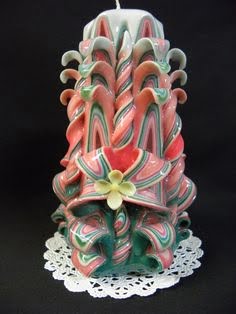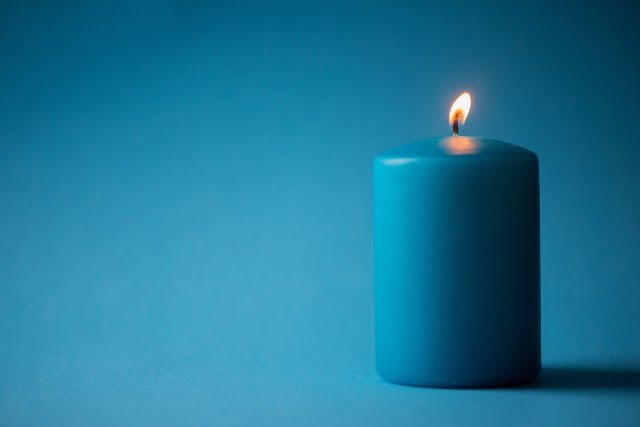Delve into the rich history of colonial candle making and its significance in the early American life. Candle making played a vital role in the daily lives of the early settlers and Native American cultures, providing essential sources of light, heat, and even currency. This craft not only illuminated their homes but also shed light on their resourcefulness and ingenuity.
The origins of colonial candle making can be traced back to the earliest European settlers who brought this craft with them to the New World. However, it is important to recognize that Native American cultures had been utilizing various techniques for creating light sources long before the arrival of European colonizers. The merging of these two traditions in early America created a diverse and vibrant candle-making industry.
Craftsmen relied on a select range of tools and materials during this era, showcasing their ingenuity in working with limited resources. Beeswax was a prized ingredient utilized by those who could afford it, while tallow candles made from animal fat were more commonly used among everyday households. The use of molds and wicks allowed for greater efficiency and consistency in candle production, further advancing the techniques employed by colonial candle makers.
Candle making varied across different regions of the American colonies due to influences from local resources and cultural practices. From New England’s abundant supply of beeswax to Southern colonies’ reliance on tallow candles, each region developed its own unique methods reflecting its available resources. These regional variations contribute to the rich tapestry that defines colonial candle making as an integral part of early American heritage.
The Origins of Colonial Candle Making
Early Settlers and Candle Making
Colonial candle making can be traced back to the earliest European settlers in America. When these pioneers arrived on the shores of the New World, they brought with them their knowledge and traditions of candle making from their home countries. Many early American settlers were skilled artisans who had been practicing candle making for generations.
Native American Influence
In addition to the techniques brought by European settlers, colonial candle making also drew inspiration from Native American cultures. Native Americans had long been using natural materials and resources to create candles for various purposes such as lighting, ceremonial rituals, and trading. They used materials like animal fats, beeswax, tallow, and plant-based waxes to make candles that were essential in their daily lives.
The cultural exchange between Native Americans and European settlers played a significant role in shaping the development of colonial candle making. The settlers learned valuable techniques and methods from the Native Americans, incorporating them into their own practices. This cross-cultural influence not only enriched the art of candle making but also fostered a sense of unity among different communities in colonial America.
Innovation and Adaptation
As colonists settled into their new lives across diverse regions in America, they encountered different challenges that required innovative solutions in candle making. In areas where traditional materials like beeswax or tallow were scarce or expensive, colonists had to adapt by using readily available resources such as bayberry wax or spermaceti wax derived from whale oil.
Colonial candle makers developed new techniques to maximize efficiency while using minimal resources. They devised molds made from soapstone or cast iron that allowed them to produce multiple candles at once rather than hand-dipping each wick individually. These innovations not only increased production but also ensured the availability of affordable candles for daily use.
The origins of colonial candle making reflect a merging of European traditions and Native American practices. The resourcefulness and ingenuity displayed by early settlers in adapting to the challenges of the New World contributed to the development of a unique craft that would leave a lasting impact on American history.
Tools and Materials Used in Colonial Candle Making
During the colonial period, candle making was an essential skill for daily life. Colonial candle makers used a variety of tools and materials to create their candles, showcasing their resourcefulness and ingenuity in utilizing what was available to them.
The primary material used in colonial candle making was beeswax, although tallow (animal fat) and bayberry wax were also commonly used. Beeswax was highly prized for its clean-burning properties and pleasant scent. However, it was also more expensive and harder to obtain compared to tallow, which was readily available from animals raised for food or agriculture.
To produce candles, colonial craftsmen utilized several tools. The most important of these was the dipping rod or wick rod, which consisted of a long stick with loops or hooks on one end to hold the wicks. The wicks themselves were typically made from cotton fibers or twisted strands of hemp. The dipping rod allowed the candle maker to repeatedly dip the wick into melted wax or fat until the desired thickness was achieved.
In addition to the dipping rod, other tools included a melting pot or cauldron in which the wax or fat was heated over an open fire. Candle molds were also employed for creating consistently shaped candles, with some molds capable of producing multiple candles at once. Wicking needles were used to thread the wick through the mold before pouring in the melted wax.
| Tools | Materials |
|---|---|
| Dipping Rod | Beeswax |
| Melting Pot/Cauldron | Tallow/Animal Fat |
| Candle Molds | Bayberry Wax |
| Wicking Needles | Cotton/Hemp Fibers |
These tools and materials allowed colonial candle makers to create a range of candles, from simple tallow candles for everyday use to intricately molded beeswax candles for special occasions. The resourcefulness and ingenuity of these craftsmen in utilizing the available materials and equipment showcased their skills and creativity in this traditional craft. Today, contemporary candle makers continue to use some of these same tools and materials to preserve the art of colonial candle making and honor its rich history.
Techniques and Methods
Traditional Hand-Dipping Method
The traditional hand-dipping method was the most common technique used by colonial candle makers. It involved repeatedly dipping a wick into melted tallow or beeswax and allowing it to cool and harden between each dip. This process would be repeated several times, resulting in a gradually built-up layer of wax around the wick.
The key to achieving a high-quality candle was to maintain a consistent temperature and thickness throughout the dipping process. Skilled craftsmen had to exercise great patience and precision, as any variations in temperature or thickness could result in an uneven or poorly burning candle.
Candle Molds and Wicking Techniques
As candle making progressed, colonial artisans developed new techniques to improve efficiency and produce candles with more consistent shapes and sizes. One such innovation was the use of molds made from materials like tin or pewter. These molds allowed for the production of straight-sided candles with uniform dimensions.
The wick would be threaded through a hole at the bottom of the mold, and then hot wax would be poured into the mold, ensuring that it completely surrounded the wick. After cooling, the mold could be removed, leaving behind a perfectly formed candle.
In addition to molds, colonial candle makers also experimented with various wicking techniques to enhance the performance of their candles. They discovered that using multiple, twisted or braided cotton strands for the wick resulted in a cleaner burning flame that lasted longer. By incorporating these innovative approaches into their craft, colonial candle makers were able to produce higher quality candles more efficiently.
Other Unique Techniques
While hand-dipping and molding were the most common methods used by colonial candle makers, there were also other unique techniques employed depending on available resources and regional practices. In some areas where bayberries grew abundantly, settlers would extract wax from boiling these berries and use it for making candles. This process required significantly more effort and time, but it produced candles with a pleasant scent and a distinctive green color.
Another technique involved rolling layers of wax sheets around the wick to create what is known as rolled beeswax candles. These cylindrical candles were smoother and required less time to make compared to hand-dipped candles.
Overall, techniques utilized by colonial candle makers varied greatly based on factors such as available materials, cultural practices, and regional influences. These diverse methods showcase the creativity and resourcefulness of early American candle makers who adapted their craft according to the resources they had at hand.
Colonial Candle Making in Different Regions
Colonial Candle Making in Different Regions: Investigate regional variations in candle making across the American colonies, highlighting the diverse influences and available resources in different areas.
During colonial times, candle making was an essential part of daily life in the American colonies. However, the techniques and materials used varied depending on the region. The availability of resources and cultural influences played a significant role in shaping these regional differences.
In New England, where beeswax was scarce, settlers relied mostly on bayberry wax to make candles. Bayberries were abundant along the coastal areas, and their berries could be boiled down to produce a fragrant and high-quality wax. This labor-intensive process made bayberry candles more expensive than those made with tallow or other waxes. As a result, they were primarily used for special occasions or religious ceremonies.
Meanwhile, in more rural areas such as the Southern colonies and frontier regions, tallow became the primary material for candle making due to its affordability and accessibility. Tallow candles were made from rendered animal fat, usually derived from sheep or cows. These candles emitted a strong odor when burned but were widely used since they provided an inexpensive source of light.
In urban areas like Philadelphia and New York City, where trade routes provided access to various raw materials, candle makers had more options. Here, affluent residents often imported beeswax from Europe or purchased it locally for their candles. Beeswax candles were highly valued for their clean-burning qualities and pleasant scent.
| Region | Main Materials Used |
|---|---|
| New England | Bayberry Wax |
| Southern Colonies/Frontier Regions | Tallow |
| Urban Areas (e.g., Philadelphia, New York City) | Beeswax |
These regional variations in candle making highlight the resourcefulness and adaptability of colonial craftsmen. The availability of materials shaped their choice of candle making techniques and ultimately influenced the quality and purpose of the candles produced. Understanding these differences provides insight into the diverse cultural and economic landscape of colonial America.
The Role of Candle Making in Colonial Life
Candles played a crucial role in the daily life of colonial households, serving various purposes beyond just providing light. In the absence of electricity, candles were relied upon for illumination during the dark evenings and nights. They were not only practical but also had cultural and social significance within the community.
1. Lighting: Candles were essential for lighting up homes after sunset. Families would gather around the candlelight, using it to read, socialize, and perform various tasks. The candlelight created a warm and cozy ambiance that made the home feel inviting, especially during long winter evenings.
2. Cooking: In colonial times, open fires were commonly used for cooking, but candles were still utilized for tasks that required precise heat or a longer-burning flame. For instance, women relied on candles to melt wax or tallow for sealing jars and preserving food. Candles also provided a source of heat to warm pots or melt ingredients slowly.
3. Cultural and Social Significance: Beyond its practical uses, candle making held cultural importance in colonial communities. The craftsmanship involved in creating candles was highly valued and respected. It was often considered an essential skill passed down from one generation to another. Furthermore, candles played a role in religious ceremonies and festivals where they symbolized purity and enlightenment.
Candle making was often a communal activity that brought people together. In some cases, neighbors would gather to help each other make candles as part of an annual tradition known as “candle drippings.” This not only strengthened social bonds but also allowed community members to share resources and expertise.
Overall, candles were an indispensable part of colonial life. They served as more than just a source of light; they facilitated daily activities such as cooking and brought people together through communal traditions. The significance of candle making can still be felt today as we appreciate its place in our cultural heritage and continue to enjoy the warm glow it provides.
Trade and Economy
The colonial candle making industry played a significant role in the economic growth and development of early American colonies. Skilled artisans involved in candle making not only provided a necessary commodity for households but also contributed to local and international trade. The demand for candles was high, making it a profitable business for those who mastered the craft.
In local trade, colonial candle makers established themselves as important suppliers in their respective communities. Many households relied on candles as their primary source of lighting, especially during the long winter nights. As a result, these artisans were able to build successful businesses by supplying candles to their neighbors and fellow settlers. They would often set up small workshops or operate out of their homes, producing candles with the tools and techniques available to them.
Furthermore, colonial candle makers played a significant role in international trade. Colonial exports of goods, including candles, were crucial to sustaining economic ties between the American colonies and Europe. The production of high-quality candles allowed colonists to participate in global trading networks.
Colonies such as Massachusetts and Pennsylvania became renowned for their superior beeswax and tallow candles, which were highly sought after in European markets. This thriving trade not only brought prosperity to individual artisans but also contributed to overall economic growth within the colonies.
To facilitate this trade, skilled candle makers had to establish strong relationships with local merchants who acted as intermediaries between producers and buyers. Merchants played a vital role in sourcing raw materials like beeswax or tallow from farmers and distributing finished candles locally or internationally. This interconnected system ensured that both producers and consumers benefited from candle making as an important part of the colonial economy.
Overall, the colonial candle making industry had a significant economic impact by generating income for skilled artisans and contributing to local and international trade networks. It served as both a livelihood for those involved and a valuable commodity for households throughout the American colonies. The trade and economy surrounding candle making played an essential role in the growth and development of early American society, further highlighting the significance of this traditional craft.
Evolution and Decline of Colonial Candle Making
Candle making in colonial times was initially a time-consuming and labor-intensive process, as it relied on traditional hand-dipping methods. However, advancements in technology and the growth of industrialization gradually transformed candle making into a more efficient and mechanized practice. The introduction of new manufacturing techniques and materials led to the decline of traditional colonial candle making.
One major development in candle making was the invention of mechanical candle-making equipment during the mid-19th century. These machines allowed for quicker production times and eliminated much of the physical labor involved in hand-dipping. Additionally, with the discovery and availability of petroleum-based paraffin wax in the late 19th century, candles could be made at a lower cost compared to tallow or beeswax candles.
As artificial electric making-love-to-roman-reigns-by-candle-light/” target=”_blank” rel=”follow noopener”>lighting became more widespread during the 20th century, the demand for candles diminished significantly. Electric lights proved to be safer, more convenient, and offered a longer-lasting light source without requiring constant monitoring or replacement like candles did. With this transition to modern lighting technologies, many small candle-making businesses struggled to compete with electrical lighting companies.
Despite its decline, colonial candle making has not completely disappeared. In recent years, there has been a resurgence in interest in traditional crafts and historical practices among enthusiasts and collectors. Many artisans have devoted themselves to reviving historical methods by handcrafting candles using the same tools, materials, and techniques employed during colonial times. Their dedication preserves this cultural heritage while also giving consumers an opportunity to appreciate handmade products associated with history.
Overall, while modern lighting technologies have largely replaced colonial candle making as a practical necessity for illumination, this traditional craft remains an important part of American history. It reflects our early struggles for light sources before electricity while serving as a reminder of our resourcefulness and ingenuity in the face of challenges.
Today, colonial candle making serves as a nostalgic and educational art form that connects us to our past and allows us to appreciate the evolution of lighting technology throughout history.
Preserving Colonial Candle Making
In recent years, there has been a renewed interest in preserving and promoting the art of colonial candle making. Various organizations, including museums, workshops, and societies, have sprung up to educate the public about this historical craft and ensure its legacy is passed down to future generations.
One such institution dedicated to preserving colonial candle making is the Colonial Candle Museum located in Williamsburg, Virginia. The museum showcases an extensive collection of antique candle molds and tools used by colonial craftsmen. Visitors can learn about the techniques employed during that era through interactive exhibits and demonstrations. Additionally, the museum offers hands-on workshops where participants can try their hand at traditional candle making techniques under the guidance of skilled artisans.
Another way in which colonial candle making is being preserved is through specialized workshops held across various communities. These workshops provide opportunities for individuals to learn the craft from experts who have a deep understanding of its history and significance. Participants not only gain practical skills but also develop an appreciation for the resourcefulness and ingenuity of early American settlers.
Societies dedicated to preserving colonial crafts play a critical role in ensuring the continuation of traditional practices like candle making. These societies often organize events such as fairs or festivals where artisans showcase their work and share their knowledge with visitors. Such gatherings create a sense of community among enthusiasts while also providing a platform for experienced craftsmen to pass on their skills to aspiring candle makers.
Through these contemporary efforts in preserving and promoting colonial candle making, this historical craft continues to thrive in modern society despite the availability of modern lighting technologies. By recognizing its cultural heritage value and appreciating the unique skills involved, we can ensure that future generations understand and appreciate the significance of this ancient art form.
Conclusion
In conclusion, the art of colonial candle making holds a significant place in American history and serves as a testament to the resourcefulness, ingenuity, and craftsmanship of early settlers. Through its origins and techniques, we can uncover a rich tapestry of cultural influences and regional variations that shaped this craft across the American colonies.
Furthermore, candles played a vital role in colonial life, serving as a source of light during dark evenings, an essential tool for cooking and household tasks, and even holding cultural and social significance in their use during special occasions. As such, colonial candle making had a tangible impact on the daily lives of early Americans.
Although modern lighting technologies have rendered traditional candle making obsolete for practical purposes, efforts are being made to ensure that this important cultural heritage is preserved. Museums, workshops, and historical societies dedicated to colonial candle making are actively working to educate and engage the public about this craft’s enduring legacy. By keeping this tradition alive, we can appreciate not only the historical significance but also the artistry and craftsmanship that went into creating these candles.
Colonial candle making serves as a reminder of our past while also providing inspiration for contemporary artisans. It offers us an opportunity to connect with our ancestors’ way of life and gain insight into their resourceful nature. So next time you light a candle or come across one hand-crafted with care and attention to detail, take a moment to appreciate its rich history and the enduring legacy it holds in modern society.

Welcome to my candle making blog! In this blog, I will be sharing my tips and tricks for making candles. I will also be sharing some of my favorite recipes.





